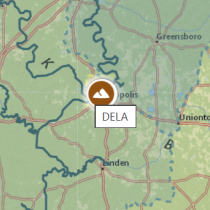NEON Collaborates with EcoSIS Team on New Spectral Data Resource
July 15, 2013
A team of researchers led by Phil Townsend at the University of Wisconsin recently received NASA funding to prototype a new public repository for standardized, high-quality spectral measurements of vegetation. The new project, the Ecological Spectral Information System (EcoSIS), is designed to enhance the accessibility and utility of new and existing spectral vegetation data. EcoSIS will both contribute to and draw upon NEON expertise and information resources. Spectrometers collect information about light at many wavelengths within the visible and infrared portions of the spectrum. In the same way that x-rays allow doctors and researchers to glimpse the inner condition of living creatures without dissecting them, spectral data can illuminate the physical structure and chemical condition of plants without destructive analysis. Spectral vegetation data provide researchers with insights into photosynthesis and the way plants utilize light. EcoSIS will archive and curate a collection of existing and new spectral vegetation data from programs such as NASA's Airborne Visual/Infrared Imaging Spectrometer and Hyperspectral Infrared Imager as well as from NEON. The repository will include spectra collected from field spectrometers, laboratory instruments, and airborne and spaceborne sensors. The repository will also store information about the spectra such as the species types and leaf properties of measured plants. EcoSIS will also work with collaborators from NEON and other institutions to develop standardized data collection procedures and metadata best practices. Following these procedures and best practices will help researchers to more effectively compare and combine datasets from multiple sources and expand the scope of their analyses over larger areas and longer periods of time. NEON will contribute field sampling protocols, spectral data collected on the ground and by airborne instruments, and a suite of complementary ecosystem data products from its richly characterized sites. In addition to archiving and sharing spectral data, EcoSIS will develop and provide open-source tools and linked plant databases. These resources will aid researchers in analyzing and visualizing data and in addressing key science questions such as the relationships between spectral data, plant species and plant condition. EcoSIS data and tools will also aid in the development of methods to scale up site-based measurements over landscapes and regions using remotely sensed information from airborne and satellite-borne instruments. These methods are key to NEON's ability to provide some of its continental-scale data.
Read more about the role of remote sensing and spectral data at NEON
